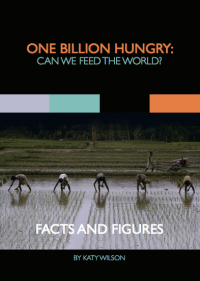 A series of international days as observed by the United Nations has and is taking place over several days this month.
A series of international days as observed by the United Nations has and is taking place over several days this month.
Yesterday
Yesterday was International Day of Rural Women, the first of which occurred in 2008. The day is about recognising “the critical role and contribution of rural women, including indigenous women, in enhancing agricultural and rural development, improving food security and eradicating rural poverty.”
Rural women are crucial in attaining sustainable rural development but they often face inequalities in terms of access to productive resources, finance, health care and education. Women and girls are also more likely to be undernourished and to go without food despite the central roles they play in a household’s wealth and health. Gender equality and women’s empowerment are not only central to household welfare though but to rural communities, national economic growth and global food security. UN Women Executive Director Phumzile Mlambo-Ngcuka, in her speech on the International Day of Rural Women, highlighted the message that rural women need to be at the heart of all development efforts.
UN Secretary General, Ban Ki-Moon, in his speech marking the occasion, talked about the need to address discrimination and unequal access to resources in the first instance. Rural women often rely on natural resources for their livelihoods. For example, in developing countries, rural women represent approximately 43 per cent of the agricultural labour force. UN Women’s publication Realizing Women’s Rights to Land and Other Productive Resources, published with the Office of the UN High Commissioner for Human Rights (OHCHR), examines the factors affecting women’s rights to land and resources, presenting success stories and future priorities. UN Women also supports several initiatives that promote the leadership of rural women and has partnered with the FAO, International Fund for Agricultural Development (IFAD) and the World Food Programme (WFP) for the “Accelerating Progress towards the Economic Empowerment of Rural Women” initiative, which “engages with governments to develop and implement laws that promote equal rights”.
Rural women are key to producing and providing food for their families. The United Nations Food and Agriculture Organisation and Farming First have produced the interactive graphic “The Female Face of Farming”, which shows the role women play in agriculture around the world.
Today
Today is World Food Day and the theme is Family Farming: “Feeding the world, caring for the earth”. This has been chosen to “raise the profile of family farming and smallholder farmers”, a key focus of the UN designated 2014 International Year of Family Farming. Family farms, the main form of agriculture in the food production sector, play a significant role in providing food and managing natural resources and thus contribute to the goals of ending hunger and poverty, protecting the environment and achieving sustainable development. 500 million out of 570 million farms across the globe are family farms, responsible for at least 56% of total agricultural production. This infographic was produced for World Food Day to highlight the critical role of family farmers. [Read more…]









